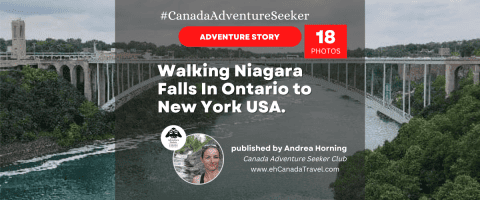Woodland Caribou Provincial Park
Park Size: 450,000 hectares
Park Amenities:
The Woodland Caribou Provincial Park is a remote and rugged wilderness park located in Sunset Country, Northwest Ontario, Canada. The park is named after its resident herd of woodland caribou.
Red Lake, Ontario is the closest community accessing the park and is often referred to as the, "Gateway to the Woodland Caribou Provincial Park."
The Woodland Caribou Provincial Park is located on the Manitoba/Ontario border measuring over 450,000 hectares (1.5 million acres).
To the northwest of the park is the Atikaki Provincial Park (Manitoba) and to the south of the park is the Eagle-Snowshoe Conservation Reserve (Ontario) and the Nopiming Provincial Park (Manitoba).
The Woodland Caribou Provincial Park geography is a combination of the Canadian Shield and boreal forest nestled in an Arctic watershed environment.
It is an environment decorated in polished glacial rocks, meadows, wetland bogs, lake systems and rocky outcrops surrounded by forests of jack pine, black spruce, trembling aspen, white birch, and balsam fir.
The park is best known for its summer adventures which include wilderness backcountry camping, fishing, canoeing and wildlife watching. Fishing and canoeing are, by far, the most popular activities in the park.
Many people arrive in the park to fish for walleye, northern pike and lake trout. Some fishermen are entertained by guides and stay with the one of the fly-in lodges or outpost camps while others are self guided fishing adventures relying on their own skills and sleeping under the stars in one the wilderness campsites. The park waterways, outposts, wilderness campsites and lodges are all accessed by water and air only.
Canoeist arrive in the park to navigate some of the 1,600+ kilometres of connecting lakes and rivers. Many of the paddle routes include portages. The most popular paddle routes explore the Bloodvein River in the north end of the park and the Gammon River in the south end of the park.
Be aware that many of the canoe routes are well marked on maps, however, the weather may have deteriorated some of the trail markings making some portage trailheads difficult to locate for the untrained eye.
The scenery in the Woodland Caribou Provincial Park is amazing. There are sightseeing opportunities for wildlife, the Northern Lights, waterfalls, whitewater rapids and ancient pictographs which date back 800 to 1,200 years and are considered to be the largest concentration of pictographs in the Canadian Shield.
The wildlife in the park is extensive with many species including caribou, moose, black bear, beaver, otter, muskrat, mink, wolverine, weasel, lynx, fox and wolf... plus there over 100 bird species including loons, bald eagles, ospreys, pelicans and great blue herons.
There are guiding companies, wilderness lodges and touring companies operating in the park providing pre-packaged adventure vacations which include accommodations, meals, equipment, transportation, guides and know how.
For self guided adventures be aware that the Woodland Caribou Park is a wilderness environment with little development and services. It is important to prepare well prior to any activity venturing into the park. And most importantly let someone know your route, your destination and when to expect you back from your adventure.
Canoe route maps, park road maps, fishing licenses and park permits are all available from the park office, some outdoor adventure stores and most outfitters. It is also wise to check in on the current weather conditions, wildlife warnings, park notices prior to any adventure in the Woodland Caribou Provincial Park.
Explore Woodland Caribou Provincial Park, Red Lake, Sunset Country, Northern Ontario, Canada
Address:
How To Get ToWoodland Caribou Provincial Park
:From Red Lake, Ontario there is road and air access leading into the Woodland Caribou Provincial Park. The roads are gravel and include many rough sections suitable for off road vehicles only. Air access is provided by floatplane outfitters located in Howey Bay in Red Lake, Ontario.
The four gravel roads accessing the park are described below:
Lund Lake Road Entry provides access to the northern section of the park and to the Bloodvein River System.






